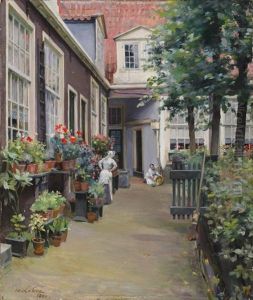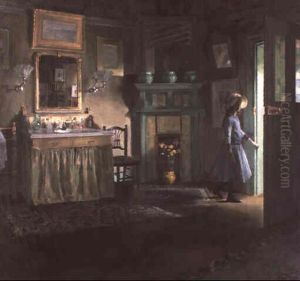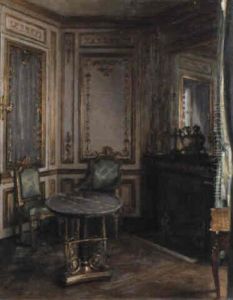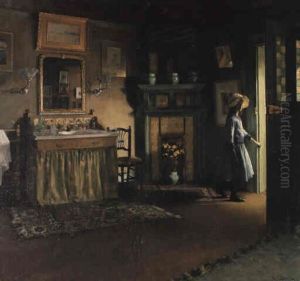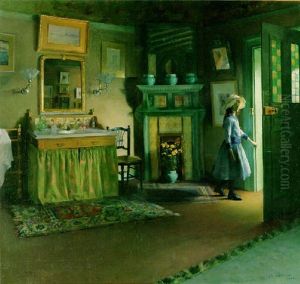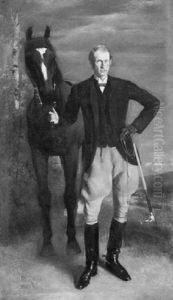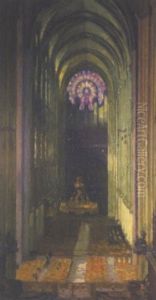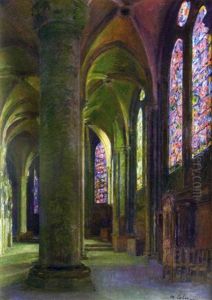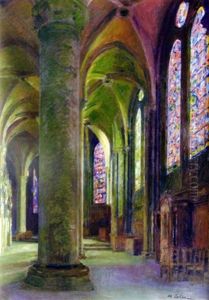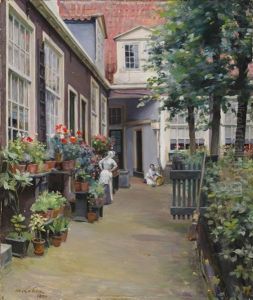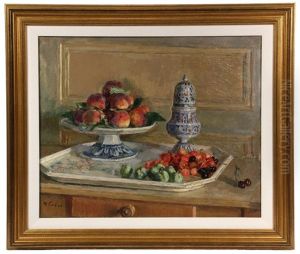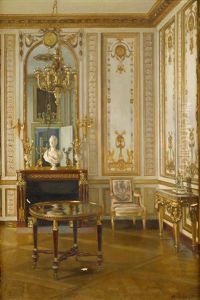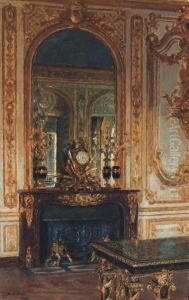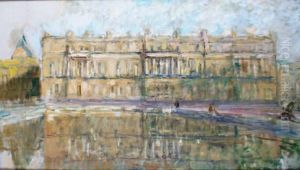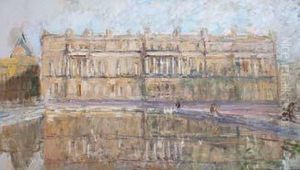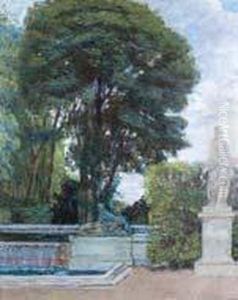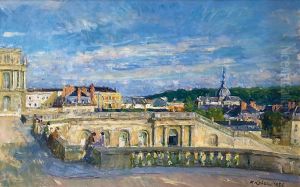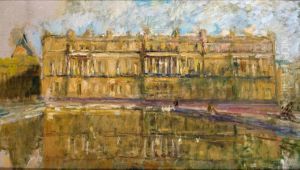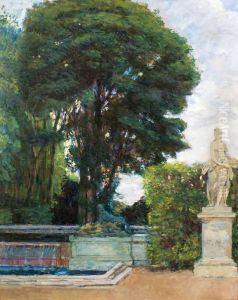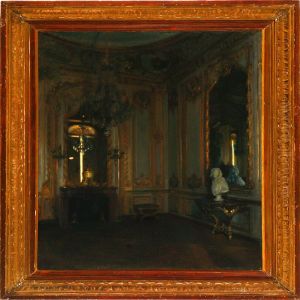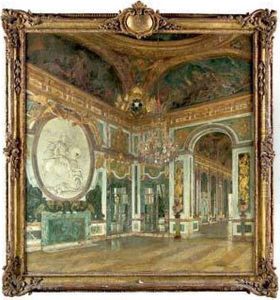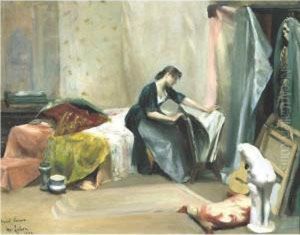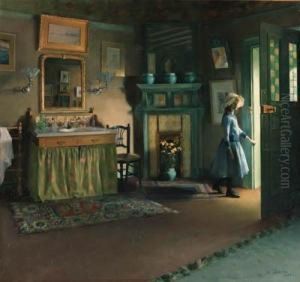Maurice Lobre Paintings
Maurice Lobre was a French painter born on February 15, 1862, in Bordeaux, France, and passed away on July 4, 1951. Lobre was particularly known for his interior scenes, landscapes, and portraits, capturing the essence of French life and architecture during his lifetime. His work is often associated with the Belle Époque period, a time characterized by cultural flourishing and artistic innovation in Europe, particularly in France.
Lobre's education in art began in earnest at the École des Beaux-Arts in Paris, where he studied under influential figures of the time, including Jean-Léon Gérôme, a prominent teacher and painter known for his classical and historical subjects. Lobre's style, however, would diverge from Gérôme's strict classical influences, incorporating a more impressionistic touch that emphasized light and color, reflective of the evolving tastes of the period.
Throughout his career, Maurice Lobre exhibited at various prestigious venues, including the Paris Salon, an annual art event that was the epitome of French artistic prestige. His work received considerable acclaim, and he was recognized with several awards and honors, showcasing his contributions to the French art scene. Lobre's paintings often depicted the interiors of French chateaux and historic buildings, capturing their opulent décor with a meticulous eye for detail and a palpable sense of atmosphere. This focus not only demonstrated his technical skill but also his deep appreciation for France's cultural heritage.
Beyond his paintings, Lobre was known to be an art collector and historian, with a particular interest in the preservation of French historical architecture. He was actively involved in efforts to preserve France's cultural landmarks, contributing to the broader movement of heritage conservation in the country.
Maurice Lobre's legacy is that of a painter who encapsulated the spirit of his time, blending technical precision with an impressionistic sensibility to document the beauty of French interiors and landscapes. His works continue to be appreciated for their historical value and their artistic merit, offering insights into the cultural and aesthetic preferences of the Belle Époque era.
